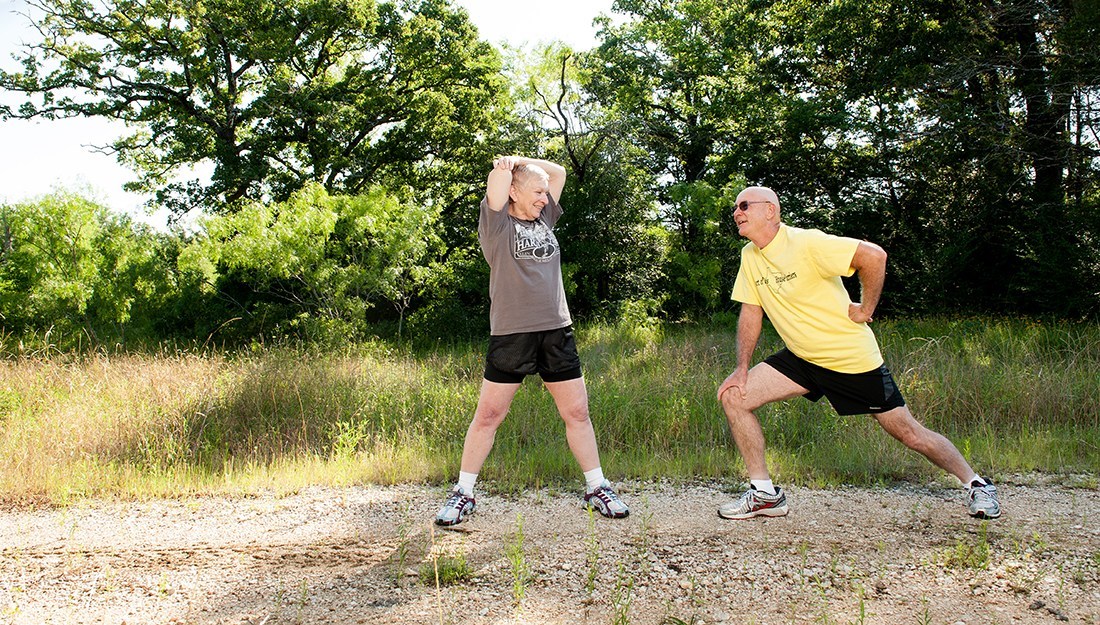Center For Population Health And Aging Opens, Formalizes Texas A&M Collaborations
With the graying of the baby boomer generation, the number of older adults in America is increasing dramatically and is likely to double by 2060, when nearly one in four Americans are projected to be 65 and older. In Texas alone, there are already more than 3 million people over the age of 65.
With these statistics in mind, Texas A&M has established a Center for Population Health and Aging, which brings together efforts from across the university and multiple partner organizations. Led by Marcia G. Ory, PhD, MPH, Regents and Distinguished Professor in the School of Public Health, the center coordinates research and community programs for understanding and promoting optimal aging.
“We need to challenge the negative stereotypes people hold about older adults,” Ory said. “The idea that older people are frail and set in their ways can be truly detrimental to health.” Research has shown that when an older adult holds negative attitudes about aging, they actually die sooner.
Still, Ory cautions that it’s not an issue that should concern only a segment of the population. “Aging isn’t something that suddenly occurs when we hit 65,” she said. “It’s occurring throughout our entire lives.”
The center, which has more than 30 faculty affiliates from nine Texas A&M colleges, builds on work that has been done before in research, education and practice. “With a comprehensive, geographically dispersed health science center composed of all major health disciplines and strong collaborations with other colleges and agencies across the System, Texas A&M can lead the way in addressing the needs of an ever-growing, ever-aging society,” said Carrie L. Byington, MD, dean of the Texas A&M College of Medicine, senior vice president of the Texas A&M University Health Science Center and vice chancellor for health services at The Texas A&M University System. “The center is a true testament to the value our Texas A&M family places on healthy aging.”
The center will use a three-pronged approach: research to assess needs and modifiable risk factors, design and implementation of interventions and then dissemination of these evidence-based programs.
For example, the Texas A&M School of Public Health, working in collaboration with the Brazos Valley Area Council on Aging and other clinical and community partners, is promoting the delivery of evidence-based programs to improve older adults’ ability to manage their chronic conditions, reduce risks of falling and decrease burdens of caring for persons with dementia. “These programs have been shown to provide better health outcomes, improve health care, and demonstrate better value,” Ory said. “So far, the center’s programs have reached more than 1,500 people, but a major challenge is to learn how to bring such successful programs to scale and sustain them over time.” Ory and her team are starting in their own backyard: Many of these programs are also being offered through Wellness Works, a program for the health and well-being of Texas A&M employees.
Did American Health Decline With The Economy During The Recession?
Ongoing research by professors in the College of Architecture and School of Public Health is examining the role the built environment plays in healthy aging, looking at how the planned community of Mueller in Austin can impact physical activity as an example.
The Texas Transportation Institute is also involved in the center due to their concern about aging drivers. “When an older adult has to give up driving because it’s not safe, that’s an incredible loss of independence,” Ory said. “But imagine, someday in the not-to-distant future if you had an autonomous car that could take you safely wherever you needed to go.”
The collaborations don’t end there. The College of Veterinary Medicine & Biomedical Sciences is interested in participating because they study how to improve the aging of animals. The Bush School of Government and Public Service is focused on economic policy around aging and legislation impacting older workers. The College of Engineering is involved in developing technology that might allow older people to remain independent for a longer period of time. Other Texas A&M partners include AgriLife Extension with their outreach across the state, the College of Education and Human Development with their complementary Center for Translational Research in Aging and Longevity, the departments of psychology and sociology in the College of Liberal Arts with their concern for factors influencing individual health as well as the context in which people age, and the Colleges of Medicine, Nursing, Dentistry, and Pharmacy within the Health Science Center. “The point is that we should all be interested in aging,” Ory said, “because aging is everyone’s business.”
Complementing the new center there is a university-wide Healthy Aging Interest Group Research, which Ory helps convene, sponsored by the Texas A&M Division of Research. Some people, especially students, may want to focus on aging more intently, and that’s why Ory is offering some initial courses in healthy aging at both the undergraduate and graduate levels. She would also like to see the center coordinate the offering of a university-wide certificate in aging studies. “One goal of the center is to train the next generation of experts in gerontology and geriatrics, which is urgently needed given the rapid aging of the population” Ory added.
In addition to behavioral and social interventions, the center includes aspects of clinical medicine and works to build bridges between clinical care and community programs. Clinical partners of the center in the Brazos Valley area include Baylor Scott & White Health, CHI St. Joseph and the College Station Medical Center. “Most people spend far more of their time in the community than in the clinic or in hospitals,” Ory said. “That’s why that link between clinical and community networks is so important.”
The diabetes self-management program or the chronic pain self-management program, for example, helps people manage their condition in the community, supplementing the care they receive from their health care provider. Programs have been held in libraries, senior centers and other places that are easy for older people to reach. “Go where it’s convenient for people and bring them things they like,” Ory said. “And then, don’t tell people, ‘This will help you,’ but instead ask “What’s important to you?” and then help them figure out how to meet those goals.” Additionally, the center hosts these programs as well as community groups such as the Texas Falls Prevention Coalition, which advocates for community-wide policies and programs to reduce preventable falls.
This kind of empowerment is a major theme for Ory and her colleagues. “Each May, there is a celebration of the value and contributions of older Americans,” she said. This recognition, formalized as Older Americans Month, has a yearly theme. This year, that theme is Age Out Loud. “What that means is to give a voice to older Americans, not to ignore them or pretend they don’t exist, but really to understand what their needs are and to realize what they can do for their communities due to their wisdom and experience.”
“The center is a call to action, that’s what excites me. I want people to know they can make a difference no matter what their age, and the infrastructure of the center helps make that happen.”
###
This story by Christina Sumners was originally posted on Vital Record.





